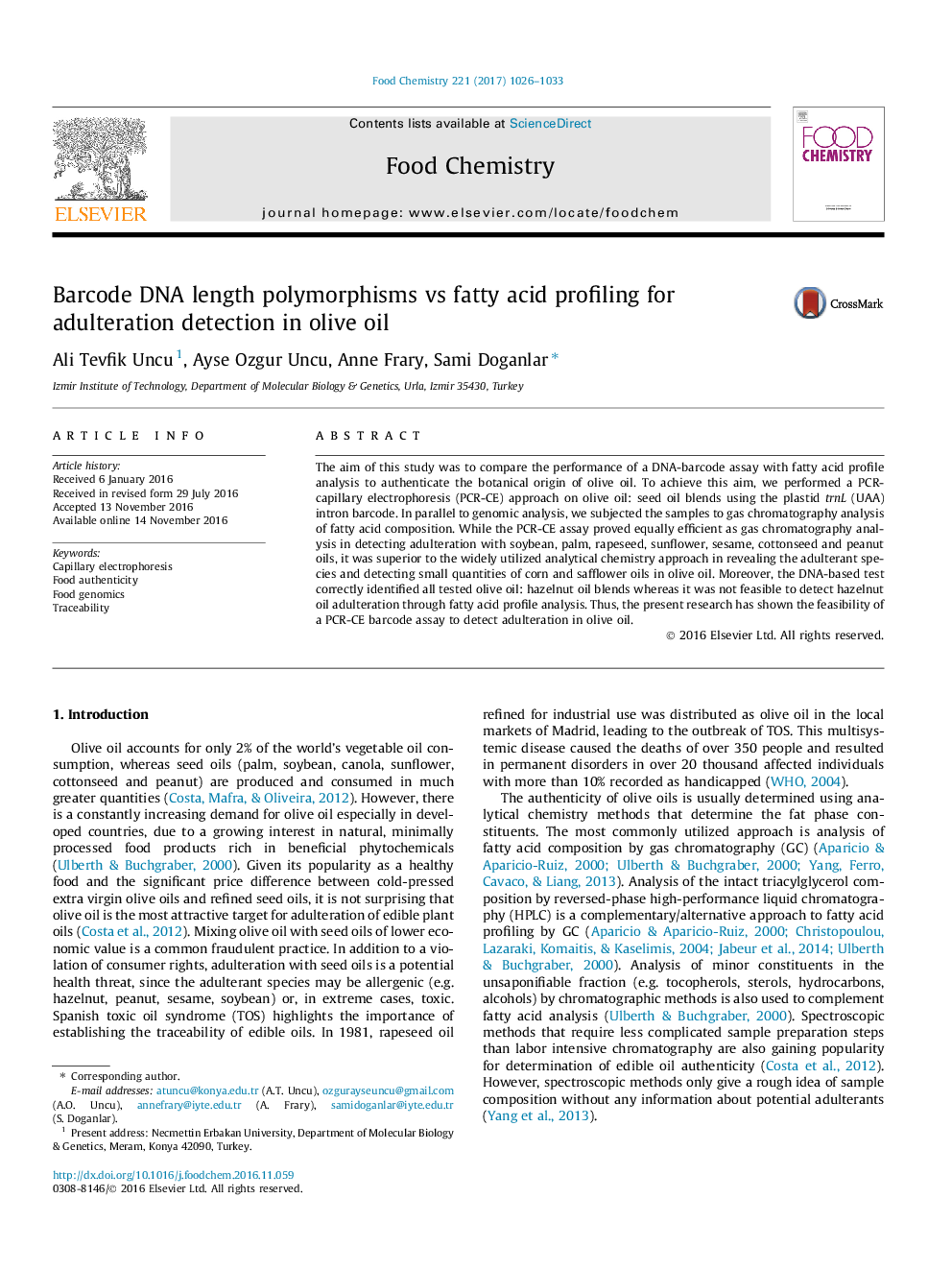| کد مقاله | کد نشریه | سال انتشار | مقاله انگلیسی | نسخه تمام متن |
|---|---|---|---|---|
| 5133803 | 1492071 | 2017 | 8 صفحه PDF | دانلود رایگان |

- PCR-CE barcode assay was tested for use in detecting adulterated olive oils.
- DNA analysis proved superior over GC analysis in detection of adulterated olive oil.
- DNA analysis reveals the exact species composition of the oils and adulterants.
The aim of this study was to compare the performance of a DNA-barcode assay with fatty acid profile analysis to authenticate the botanical origin of olive oil. To achieve this aim, we performed a PCR-capillary electrophoresis (PCR-CE) approach on olive oil: seed oil blends using the plastid trnL (UAA) intron barcode. In parallel to genomic analysis, we subjected the samples to gas chromatography analysis of fatty acid composition. While the PCR-CE assay proved equally efficient as gas chromatography analysis in detecting adulteration with soybean, palm, rapeseed, sunflower, sesame, cottonseed and peanut oils, it was superior to the widely utilized analytical chemistry approach in revealing the adulterant species and detecting small quantities of corn and safflower oils in olive oil. Moreover, the DNA-based test correctly identified all tested olive oil: hazelnut oil blends whereas it was not feasible to detect hazelnut oil adulteration through fatty acid profile analysis. Thus, the present research has shown the feasibility of a PCR-CE barcode assay to detect adulteration in olive oil.
Journal: Food Chemistry - Volume 221, 15 April 2017, Pages 1026-1033